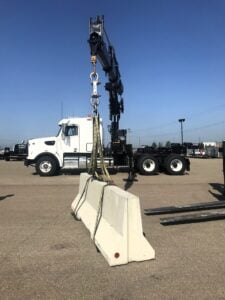
The use of cranes is vital in numerous industries, including construction, manufacturing, and logistics. These powerful machines enable the lifting and transportation of heavy loads, contributing to the efficiency and productivity of various operations. However, when it comes to newly mounted cranes, it becomes crucial to prioritize safety and reliability through comprehensive stability testing. This blog article explores the significance of stability testing for newly mounted cranes and the potential risks associated with neglecting this crucial step.
The safety of crane operators is of paramount importance. A newly mounted crane must undergo stability testing to validate its structural integrity, load capacity, and stability under different operating conditions. Stability tests help identify any potential issues or limitations in the crane’s design or installation, minimizing the risk of accidents and injuries caused by toppling or tipping over.
A stable crane not only protects the operator but also prevents equipment and property damage. Without proper stability testing, a crane may exhibit unexpected behavior under load, leading to uncontrolled movements, collisions, or structural failures. Such incidents can result in severe damage to the crane itself, nearby structures, or other equipment, leading to costly repairs, project delays, and potential legal liabilities.
Stability testing plays a vital role in optimizing operational efficiency. By conducting comprehensive tests, crane operators and project managers gain valuable insights into the crane’s capabilities and limitations. This knowledge allows for better planning and decision-making regarding load capacities, lift heights, and operating parameters, leading to smoother and more efficient operations. A stable crane helps prevent downtime due to unforeseen issues, ensuring the continuity of work and project timelines.
Various industry standards and regulations are in place to ensure the safe and responsible use of cranes. Stability testing is a crucial aspect of meeting these requirements. Regulatory bodies such as Alberta OHS and industry organizations establish guidelines to ensure the safe operation of cranes, including stability testing protocols. By conducting proper stability tests, crane owners and operators demonstrate their commitment to adhering to these standards, reducing the risk of legal and regulatory consequences. For example, in BC they are cracking down on cranes that don’t have paperwork showing that the unit has been stability tested.
Mounting a crane involves complex engineering and installation processes. During stability testing, any design or installation flaws can be identified and addressed promptly. This proactive approach enables modifications or corrections to be made to the crane’s structure, foundation, or supporting components, ensuring optimal performance and safety. By detecting and rectifying these flaws early on, potential risks are mitigated, and long-term issues are avoided. We have had units that started to tip over just from the weight of the crane, with no load on it.
The stability testing of newly mounted cranes is an essential step that cannot be overlooked. It ensures the safety of crane operators, prevents equipment and property damage, enhances operational efficiency, and promotes compliance with industry standards and regulations. By investing time and resources in stability testing, crane owners and operators prioritize safety, reliability, and responsible operation. Ultimately, the benefits of stability testing far outweigh any inconvenience or cost, as it serves as a crucial safeguard for both personnel and the successful execution of various industrial operations.
If you have any questions about Stability Testing your crane, give us a call.
